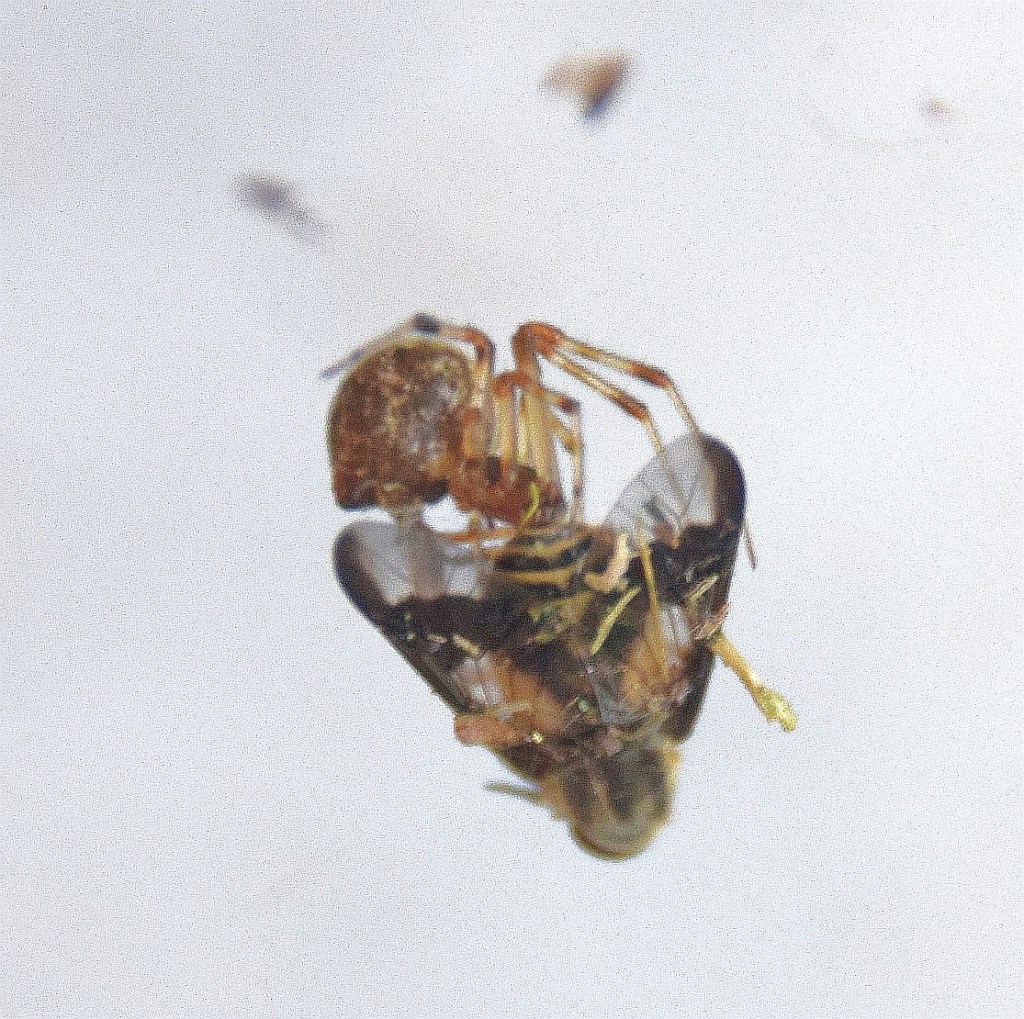I wonder if there were any bugs on the ice world Hoth. I’m guessing not, since the whole planet was apparently in permanent winter, as we are here in Troy despite the arrival of “spring” weeks ago. Besides a sudden infestation of whiteflies in the cyclamen and the occasional misguided mosquito, we still haven’t seen an insect here since about November. Most of them find shelter and go into diapause, a kind of hibernation, during winter. Which they clearly think is still on, since the snowbanks around the driveway are still 5 feet high. Seasonal cold doesn’t affect their summer populations much.
But natural disasters do. And you might want to think this over before you cheer about the natural elimination of creepy-crawlies. A study of bug populations conducted before and after Oklahoma’s historic flooding in the spring of 2015 turned up some uncomfortable results.
That March, record rainfall led to Lake Texoma, just on the border of Oklahoma and Texas, rising more than 30 feet and flooding the area for months. Entomologists from the University of Oklahoma and Cameron University had just made an inventory of the insect populations in the vicinity of the lake, so when the flooding occurred, they had a body of data all ready to compare to post-diluvian observations.
They found that nine months after the floods, there was a 93 percent decrease overall in terrestrial (non-aquatic) invertebrates, including a 64 percent overall decrease in biomass. Most of the seven classes of invertebrates they collected in their traps early in 2015 had disappeared completely in September, and most of the rest had significantly decreased. For example, they had collected 14 species of ants before the flood; after the flood, only three ant species were present.
The exceptions to the overall decline were spiders, whose population increased slightly, and beetles and crickets. In fact the cricket population skyrocketed, because they thrive in disturbed habitats, particularly in decaying vegetation typical of flooded areas. The other thing the researchers noticed was that the above-ground and below-ground bug communities — which in normal times are largely segregated — were mixed together after the floods.
By March 2016, a year later, some bug populations were starting to recover, and cricket, grasshopper and beetle populations were coming back down. But some, such as millipedes, woodlice, slugs, and butterflies and moths, had not recovered at all.
For bugs, in other words, natural disasters such as floods can be in the range of catastrophic. That’s my word, not the researchers’. This bears thinking about.
Invertebrates, as repugnant as some people find them, play vital roles in the backyard. They decompose soil as part of the recycling of nutrients; they are elemental components of the food chain, providing food for each other as well as birds, amphibians, reptiles and some mammals; some are herbivorous and have an impact on plant survival; some play major roles in the pollination of wild and domestic plants; some acting as parasites are important to the regulation of animal populations. So when a natural disaster like a massive flood wipes out whole bug populations, the disturbance can have deeply disturbing effects.
The researchers point out that global warming leads to an increase in severe weather events that in turn scramble ecological communities. They note the documented disturbances to arthropod communities after Superstorm Sandy.
Lead researcher Karl Roeder told Entomology Today: “As these weather events can perturb natural communities in very dramatic ways, it will be important to understand which organisms are likely to persist or at least able to recolonize areas quickly. If such species are unable to perform functions of the displaced individuals — such as soil cycling, decomposition, or pollination — ecosystems may have trouble returning to their previous states.”
In other words, because we need stable ecosystems, we need healthy bug populations. The more natural disasters there are, the less stable are the ecosystems, and the less stable is our own existence. Global warming has consequences up and down scales.
Natural cycles of summer and winter, with a little more or less heat or a little more snow than usual, are one thing. Insects, like us, are adapted to that. And Hoth was already an ice wasteland, so the war there between the Empire and the Rebel Alliance probably didn’t disturb many bugs. Also, it is a fictional location. The ecology affected is your mind, not your backyard.
The place where the Hoth scenes were filmed, though, is a real location, the Hardangerjøkulen ice cap in southern Norway. Recent studies indicate global warming is melting that ice cap. I don’t know what it’s doing to the invertebrates that live there, but disappearing ice eventually will be a serious problem. Ninety-nine percent of Norway’s electricity is produced by hydropower, which depends on glacial water, of which Norway contains half of the entire supply for Europe.
The fact that we are wasting time and energy inventing fictions to pretend that what’s happening isn’t happening, instead of doing something about it, bugs me.
Dana Wilde lives in Troy. You can contact him at naturalist1@dwildepress.net. His recent book is “Summer to Fall: Notes and Numina from the Maine Woods” available from North Country Press. Backyard Naturalist appears the second and fourth Thursdays each month.
Send questions/comments to the editors.



Comments are no longer available on this story